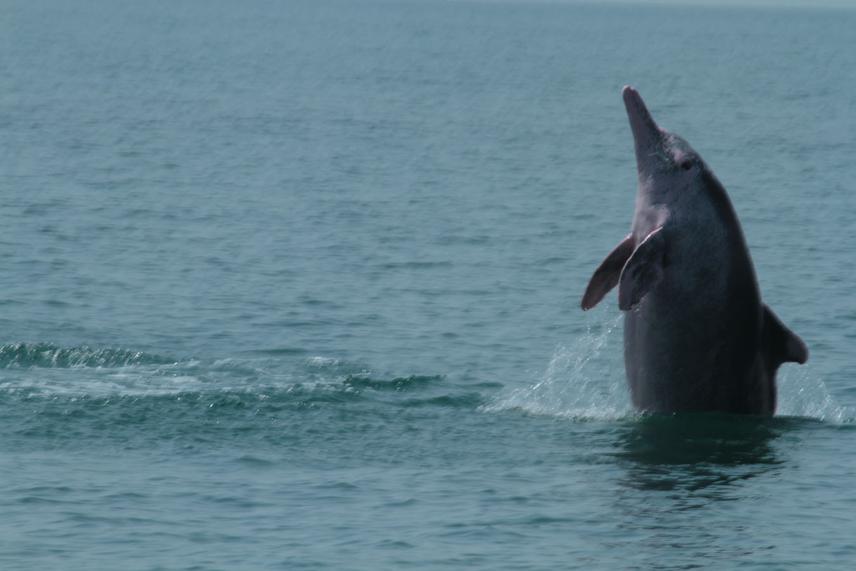Social media video featuring the project.
Rahul Muralidharan
This project aims to the study the Indo-Pacific humpback dolphins, artisanal fisheries and their interactions in the Gulf of Mannar Marine National Park and the Palk Bay in Tamil Nadu

Indo-Pacific humpback dolphin-Palk Bay.
As a near-shore cetacean, the Indo-Pacific humpback dolphin (‘humpback dolphins’, henceforth) often overlap with coastal artisanal fisheries. Research on the population status of humpback dolphin is severely lacking in many parts of the species’ range. However, interactions with artisanal fisheries are recognized to be an emerging threat to cetacean conservation. Owing to paucity of research, especially on the East coast of India, the extent and the nature of these interactions remain unknown. On the other hand, marine protected areas (MPA) are identified as effective conservation tool for the protection of cetaceans and their habitat. It is still unclear how MPAs achieve their purpose of protecting mobile marine species such as cetaceans while maintaining fish biodiversity.
This study will be conducted in the Gulf of Mannar Marine National Park and the adjacent Palk Bay area in Ramanathapuram district, located in the south-east coast of Tamil Nadu, India. The Gulf of Mannar is fringed by 21 coral reef islands; and due to its biological significance a 560 sq.km area was declared as a marine national park in 1989. The biophysical dynamics of this region influence a variation in fishing craft and gear use by season and location, which makes this location a suitable place for artisanal fishing operations.
As an initial step, this study aims to produce baseline data on population densities, habitat use and seasonal occurrence of humpback dolphins in the data sparse East coast of India. Likewise, a general lack of long-term data in both the biological and human dimensions of artisanal fisheries pose serious constrains in making meaningful suggestion for their management. Artisanal fish catch and effort surveys will be carried out to assess seasonal trends in fish diversity, density and socio-economics of this sector. Data will be collected through a combination of ecological and social research methods, including boat-based line transects, fishing vessel and landing centre based surveys and interviews.
This study aims to provide crucial information to artisanal fishing communities about humpback dolphin presence and movements that will directly aid in bycatch reduction. More importantly, by accommodating perspective and engaging with artisanal fishers and fisheries managers, this study will aid in promoting environmentally equitable and socially just marine conservation efforts of policy relevance.